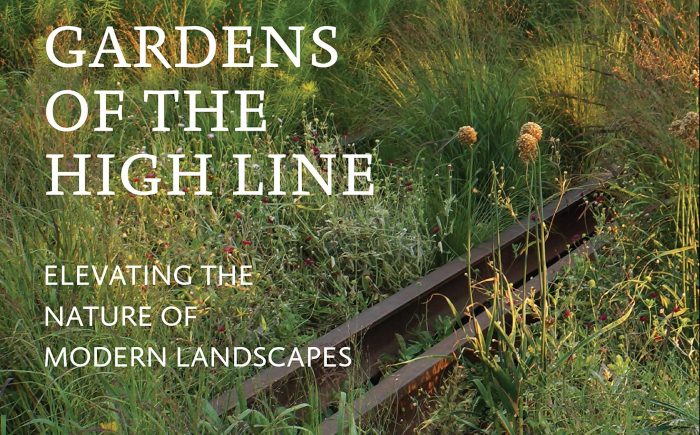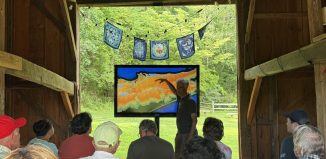Book Review: ‘Gardens of the High Line’
Elevating the Nature of Modern Landscapes
By Piet Oudolf and Rick Darke
Reviewed by Jeffrey Sanzel
“I feel very strongly in the sort of planning that I do, that you feel the changes all the time. It is a changing beauty: from beauty into beauty.” — Piet Oudolf
In the introduction of Gardens of the High Line, Richard Hammond, co-founder of Friends of the Highline, addresses the issues that confronted the creators of the gardens. Is the goal to preserve the natural wildness of the vegetation or to recreate entirely? The final decision was to find something in between, that both honors the desire to conserve but also understands the value of change.
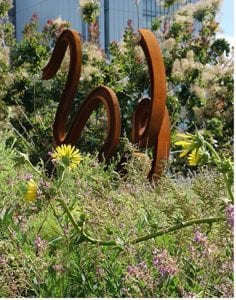
What resulted was both native and introduced flora: “[a] multi-season garden of perennials, where the skeletons of plants have as much a part in the landscape as new growth … the wilderness in the city, the art museum on a train track. Like the park itself, the gardens hover between beauty and decay.”
The High Line gardens are a true reflection of New York City. It is a place of growth and loss, romance and introspection; elements that are fixed and others that are constantly transforming. And, amazingly, it is where these aspects can co-exist.
The book’s prose is as elegant and eloquent as its imagery. It gives multi-leveled insight to not only the creation of the space but the more esoteric motivations beneath. It takes the reader through the history of the High Line and its roots in industry. It discusses its changing identity and evolution and, finally, its reinvention.
There is also a detailed exploration of wild gardens, citing historical sources, and how untamed growth often transforms ruins. It explains the art that inspires and the craft that designs — and, most importantly — the alchemy that joins the two. This is not your average gardening book.
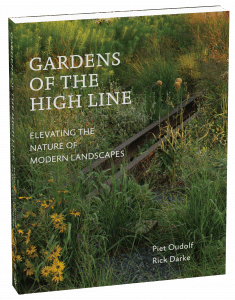 “Though it’s unlikely there will ever be another place quite like the High Line, it offers a wealth of insights and approaches worthy of emulation in gardens large or small, public or private. Authentic in spirit and execution, the High Line’s gardens offer a journey that is intriguing, unpredictable, imperfect, and, above all, transformative.”
“Though it’s unlikely there will ever be another place quite like the High Line, it offers a wealth of insights and approaches worthy of emulation in gardens large or small, public or private. Authentic in spirit and execution, the High Line’s gardens offer a journey that is intriguing, unpredictable, imperfect, and, above all, transformative.”
After the introductory analyses, the book begins at the southernmost end of the High Line, at the Gansevoort Woodland, the area that is Gansevoort Street through Little West 12th Street. The route continues north, each section highlighting a different area: Washington Grasslands, Hudson River Overlook, etc., going all the way up to the Rail Yards, ending at West 34th Street.
Ultimately, the glory of this book is the hundreds of photos by Rick Darke to be seen and savored. The photography is vivid, an explosion of color and texture. The chapters offer dozens of photos that span a range of viewpoints, showing the change of seasons, both extreme and subtle. Each turn of the page reveals the gardens in some different perspective, no two alike, but allowing the viewer to see the similarities as well as the contrasts. The book shows both an unbridled and an organized environment through the prism of the world as nature’s art gallery.
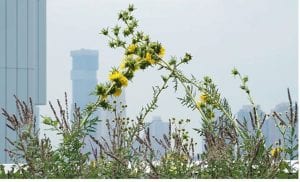
In the end, the authors see the book’s goal as one that will “serve as a beautiful memory of a great place, as guide to the infinite opportunities it presents to practice the art of observation and as an inspiration to all who, publicly or privately, seek to elevate the nature of modern landscapes.” They have succeeded in a work that honors artistry and insight with deep understanding, celebrated through hundreds of dazzling and breathtaking images.
Published by Timber Press, Gardens of the High Line: Elevating the Nature of Modern Landscapes is available online at www.timberpress.com, www.amazon.com and www.barnesandnoble.com.

